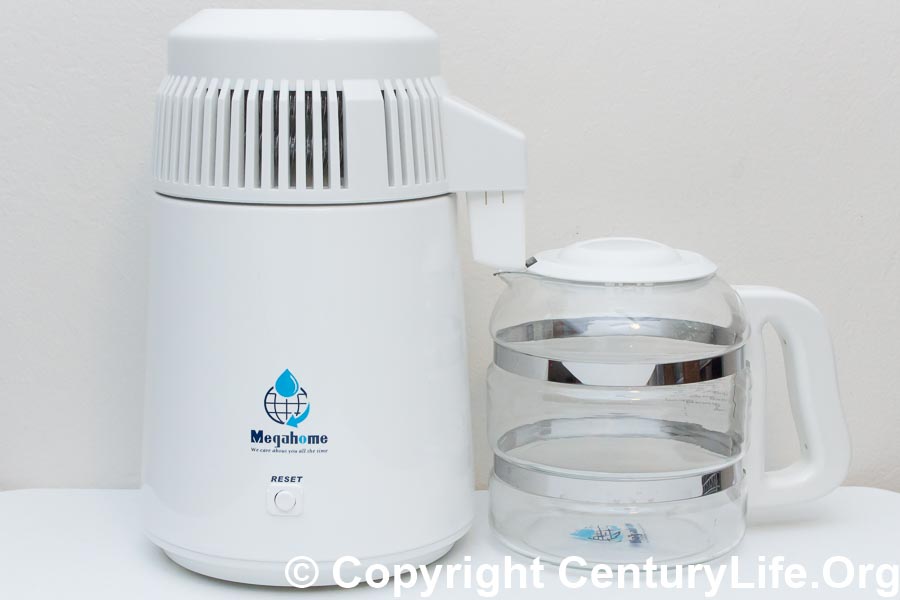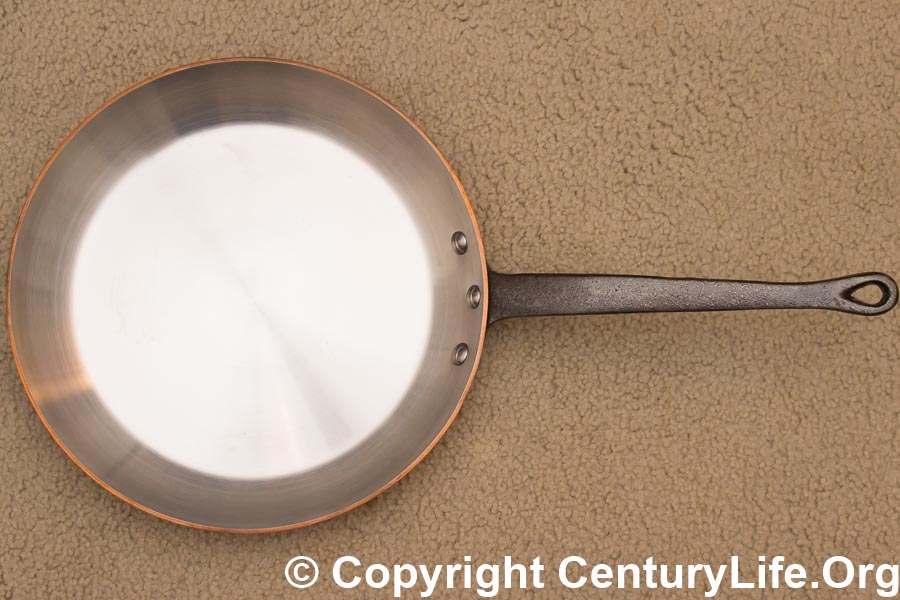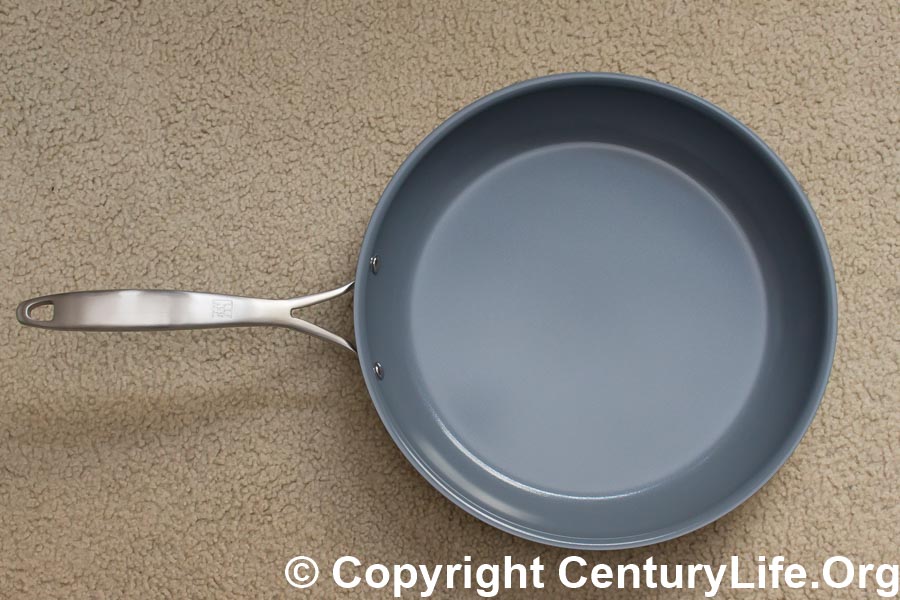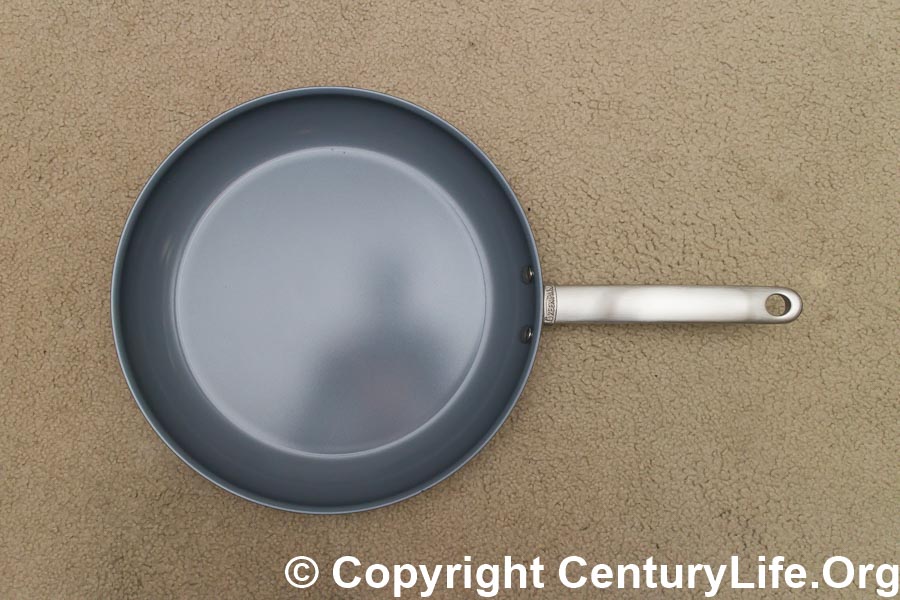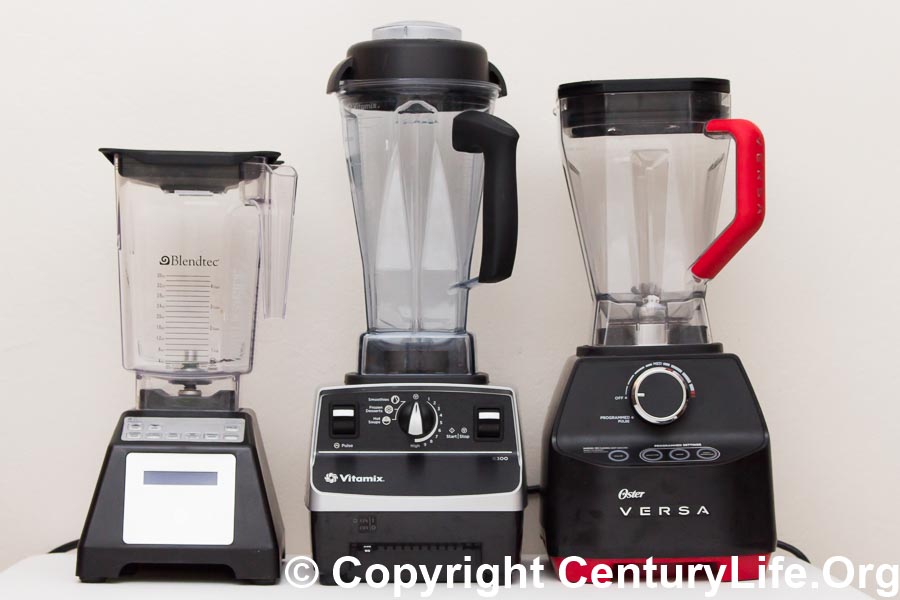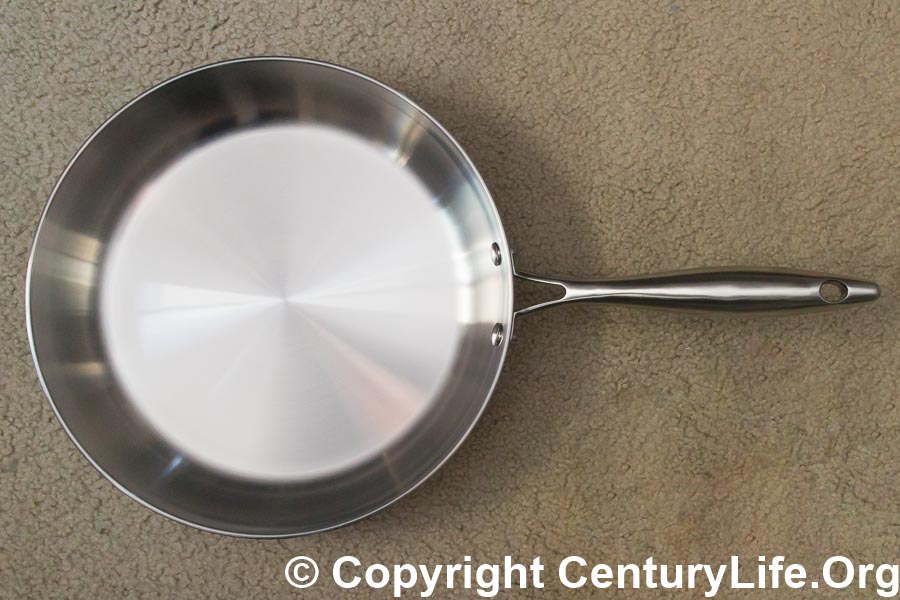
THE COMPANY
Scanpan (“Scan” for “Scandanavian” since they are made in Denmark; “pan” meaning cooking pan) is a Danish company founded in 1956.1
Scanpan is perhaps better known for its nonstick Scanpan CTX line of cookware–which Scanpan tries its best to portray as something other than a PTFE/Teflon pan even though it is in fact a PTFE/Teflon pan. That’s why they can only advertise it as PFOA-free instead of both PFOA- and PTFE-free. (Those acronyms are confusing; if you need to refresh your memory on the difference, click here.) Scanpan is not the only European cookware maker that tries to cover up its use of PTFE; Woll and Swiss Diamond
do the same.
But Scanpan also makes a Scanpan CSX product line that is constructed similarly to All-Clad Stainless, with three visible layers: an interior 18/10 stainless steel cooking surface layer, a middle layer of aluminum alloy, and an exterior 18/0 magnetic stainless steel exterior that makes the pan compatible with induction stoves. (The overly-enthusiastic Scanpan marketers count the microscopically thin bonding layers of aluminum as separate layers, but in actuality it has just as few layers as All-Clad Stainless.)
